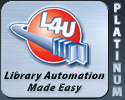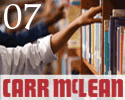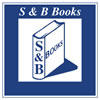Podcasting for Learning
Anita Brooks-Kirkland
Anita Brooks-Kirkland is an Information Technology Consultant for the Waterloo Region District School Board, responsible for school library programs, K–12. She leads many workshops for teachers on integrating ICT into the curriculum. Anita is the Past President of the Ontario School Library Association.
Issue Contents
______________________________________________________
Podcasting. You may have heard the word, and you may even know what it means. The question is, does thinking about using podcasting in your school library program make you break out into a cold sweat, or does it inspire your curiosity about the potential for student learning? Podcasting is one of simplest and most exciting technologies to emerge over the past couple of years, and one of the most useful for education. Do we want to handle new technologies by avoiding them, or should we be embracing new ways of engaging our students in the learning opportunities that the evolving Read/Write web offers today? If you’re at least curious about these possibilities, then read on.
So what exactly is a podcast? A podcast is like a radio program that you can subscribe to over the Internet. When you subscribe to a podcast, your computer lets you know every time there is a new episode, which you can then download and listen to at your leisure, either on your computer or your MP3 player. As you may have guessed, the word comes from the most famous of all MP3 players, the iPod. The concept is very simple, but quite a departure from how we are used to listening to radio. In a world with podcasts, you can listen to what you want, when you want and where you want. You can listen to polished professional broadcasts or to a program recorded by total amateurs in their basement rec room. You can find podcast content on virtually any topic imaginable. Podcasting has only been around for the past couple of years, and its popularity continues to grow exponentially. Podcasting technology is also evolving at a lightning rate. Now you can even create “cover art” and a simple photo slideshow to go with your audio podcast. The latest development is the advent of video podcasting, which opens up another authentic way for students to share their learning. For the purposes of this article, we will focus on audio podcasting, minus all of the visual enhancements.
Purists will insist that to be a true podcast, the program must be available by subscription. The subscription feature of podcasts is possible because of RSS technology (Really Simple Syndication or Rich Site Summary). But a podcast, being a simple audio file, can be posted on a website and accessed the old-fashioned way – by going to the website and downloading it. Either way, podcasts provide a new way for sharing information.
Who is Podcasting?
Like many new technologies, the early adopters tended to be dedicated amateurs. Just as the advent of the World Wide Web saw anyone and everyone creating web content, the process of creating a podcast is so simple that the same thing is happening with audio content. From amateur comedy shows, music broadcasts, advice shows, and sports commentaries, to religion, politics and relationships, it’s all available. And as is the nature of the Internet, many of these amateur productions have a tremendous following. The web has become a truly interactive medium, with content creation of all kinds now being so easy and accessible that it is changing the way we must think about information. But that’s a much bigger topic, for another column!
The mainstream media was very quick to catch on to podcasting. News outlets and public broadcasters were early adopters of the technology. Journal publishers, universities, museums and other public institutions have been quick to take advantage of the tremendous potential of the podcast medium. Publishers are now starting to include podcast feeds with their subscription database content. To give you a small taste of what’s available, over the past few days I have been exploring:
- News commentary podcasts from public broadcasters like the BBC, CBC and NPR
- Other content from public broadcasters, like the popular CBC science show Quirks & Quarks
- Audio tours and lectures from New York ’s Museum of Modern Art
- A wide variety of lectures from major universities
- Book reviews for kids
- Amateur political satires, comedy shows, and “techno-geek” broadcasts
- Movie reviews – professional and amateur
And the list goes on. Libraries are amongst the latest to catch the podcasting bug. The Waterloo Public Library in Waterloo , Ontario recently received a grant from Ontario ’s Ministry of Culture to produce audio “heritage walking tours”. Library patrons will be able to access these podcasts online, and the library also plans to lend out MP3 players to patrons, who can take the real walking tour while listening to the podcast.
Educational institutions have also been early adopters of podcast technology. Universities in particular see their potential for eLearning – providing lectures on demand for students and anyone else interested in broadening their horizons. Podcasts are now being used to provide another option for professional development in many organizations, and many are fully indexed in podcast aggregators like iTunes.
Podcasting in Your School Library Program
So, where does this all fit into your school library program? There are two areas with great potential – an opportunity for you to deliver learning to students, and the very exciting potential for student-created learning.
In the school library, there is standard content that we make available to our students regularly: library orientations, tutorials on accessing information, using digital resources, writing proper citations, etc. Many teacher-librarians have gone the step of making this type of text-based tutorial content available electronically on school library websites. Also providing this type of support in a podcast audio format would allow for more instructional flexibility and differentiated instruction for auditory learners or those struggling with text. A library orientation podcast, for example, could be downloaded onto an MP3 player, for a real time personal tour. Having learning on demand, available to students when, where and how they need it. Fabulous.
But what excites me the most is the potential that podcasting gives to students to create their own understanding of the topics they are studying. Podcasting is a natural fit for project-based learning. It is engaging for students, and makes their work available to a real audience beyond the four walls of the school. Using the medium to create their own content also increases students’ understanding of the interactive web and helps to develop their own critical thinking about content created by others. “Sometimes new formats are the key to igniting interest. While creating podcasts, students learn to research, write, develop vocabulary, speak effectively, manage time, solve problems, and grab attention.” (Eash, 2006)
Some adventurous educators have already begun exploring the potential of student podcasting, and I’ve been extremely impressed with the quality of work that I have found. Over the past few days, I have been listening to:
- Grade Five students performing their “Fortunately, Unfortunately” poems
- Grade Five students on a variety of science topics, including the senses, sound and light
- Grade One students on the solar system
- Grade Two students on respect (“Respect Rocks!”)
- Grade Four Poetry Corner
- Grade Six students’ grammar songs (i.e., “The Subject Pronoun Mariachi”)
- Grade Three/Four students interviewing a state senator
- High school students broadcasting a weekly school news show
- High school student roundtable discussion
These podcasts incorporated all sorts of formats, from interviews to documentaries to dramatizations or taped performances. The possibilities are seemingly endless, especially when you start to think of the even broader possibilities of the video podcast format.
How do I create a podcast?
Depending on your comfort level with technology, creating an original podcast may range from simple to somewhat challenging. The fact is that the interactive nature of the web these days has created a demand for simple but powerful technology to create and share content. Things aren’t nearly as complicated as they used to be – a microphone, a computer and a sound recording program are really all you need. A digital recorder is useful for “on location” recording. There are several software programs ideal for creating podcasts, including the very popular and free program, Audacity (http://audacity.sourceforge.net/ ). Apple’s GarageBand 3, part of the iLife ’06 suite of multimedia programs, includes a podcast template, and it integrates easily with iTunes for managing and sharing your podcast creations. The process, then, from a technological point of view, is a matter of recording the voices, mixing in any appropriate music clips and sound effects, and then exporting your creation in MP3 format to post on a website. Podcasting has progressed to the point where a large number of copyright free music clips and jingles are now becoming available for use specifically in podcasts, to give them a more polished presentation.
If you want to subscribe to podcasts, then you need an aggregator, or a program that collects and manages all of your RSS feeds. The aggregator helps you find the content you are looking for, and notifies you when new broadcasts are available from your favourite podcast sources. Apple’s widely popular iTunes serves as an aggregator, and there are a number of other programs that serve this function. You may also choose to make your own podcasts available for “subscribers” through an RSS feed.
Student Safety and Podcasting
As with anything on the Internet, there is a wide range of content out there, from the fabulous to the extremely objectionable. School board content filtering systems may block some aggregators, making access a bit more challenging. The iTunes site, for example, is blocked by some school boards because of the explicit nature of some of the commercial video content it makes available. Because of this, it may be more practical to access podcasts directly from websites as opposed to searching or subscribing through an aggregator. When you have students create podcasts, always be aware of protecting their personal information, and follow your school board’s policy on this.
Ready to Give Podcasting a Try?
So, are you ready to fully engage in the new interactive web and start creating podcasts for your library or with your students? The best way to start is to dip into existing podcasts, and get a feel for how they work. The next step is to learn a bit of the technology, and let your imagination lead you to the links with your library program. Here are some great starting points for your research:
Joyce Valenza’s website includes a page with links to educational podcasts and information about podcasting:
http://joycevalenza.com/podblogwiki.html
Apple has a series of videos and articles on podcasting in their resources for K–12 education:
http://www.apple.com/education/resources/podcastingvideos/
The most important step is to actually start creating podcasts at your school. The medium is so very relevant to our students today, and relates directly to the way they now access and use information. Society’s interaction with information has changed drastically over the past two years, with the advent of the Read/Write web in all its permutations, including podcasting. We, as teacher-librarians, need to take a leadership role in developing the information literacy skills needed to make sense of the new interactive web reality. We also need to be leaders in integrating this exciting new technology into our own instructional strategies, to enhance students’ learning. What better place to develop 21st century information skills than in the information hub of the school, the library!
References:
Apple Computer Inc. (2006) Podcasting in education. Retrieved May 5, 2006 from http://www.apple.com/education/resources/podcastingvideos/
Eash, E. K. (2006). Podcasting 101. Computers in Libraries, 26(4), 16–20. Retrieved April 21, 2006, from EBSCO Academic Search Elite database.
Valenza, J. (2006). New tools for student learning. Retrieved May 5, 2006 from http://joycevalenza.com/podblogwiki.html
Recommended Bibliography
Adams, C. ((2006). Geek’s guide to teaching in the modern age. Instructor, 115(7), 48–51. Retrieved April 21, 2006, from EBSCO Academic Search Elite database.
Borja, R. (2005). Podcasting craze comes to K–12 schools. Education Week, 25(14), 8–8. Retrieved April 21, 2006, from EBSCO Academic Search Elite database.
Farkas, B. (2006). Secrets of podcasting: Audio blogging for the masses. Berkeley , California : Peachpit Press.
Richardson, W. (2006). Blogs, wikis, podcasts, and other powerful web tools for classrooms. Thousand Oaks , California : Corwin Press.
Richardson , W. (2006). The social web. Technology & Learning 26(8), 30–32. Retrieved April 21, 2006, from EBSCO Academic Search Elite database.
______________________________________________________
Copyright ©2006 Canadian Association for School Libraries | Privacy Policy | Contact Us
ISSN 1710-8535 School Libraries in Canada Online
|





Sponsors Welcome |
|
